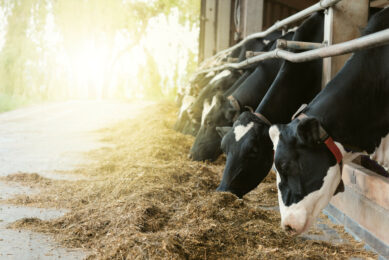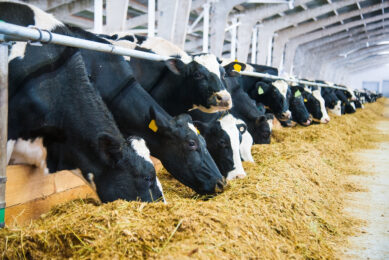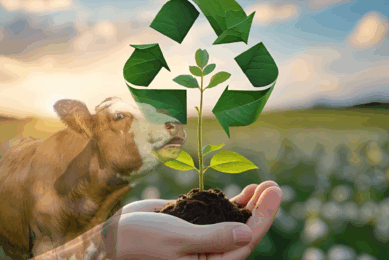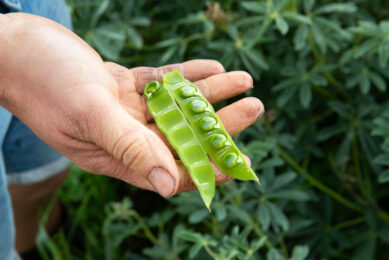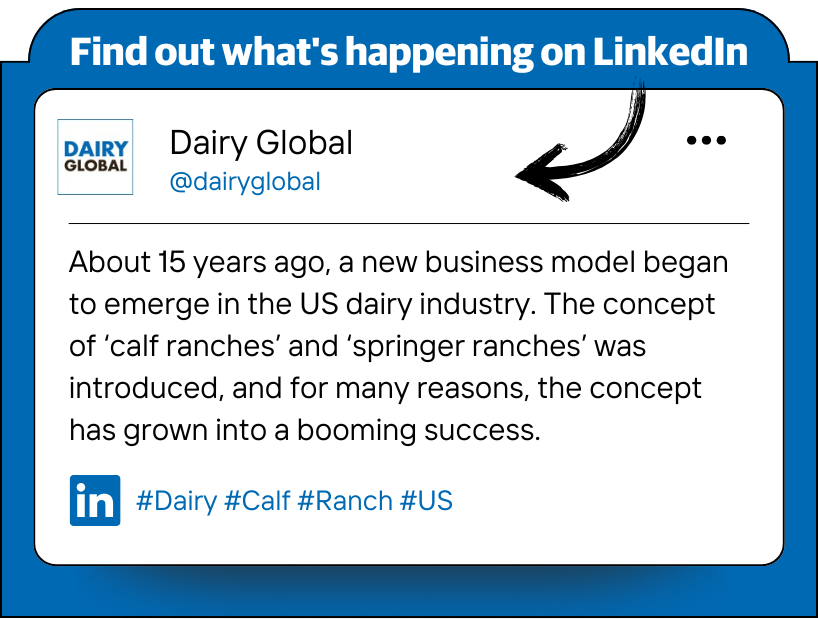In the latest mag: From tackling heat stress to what’s key in reducing emissions
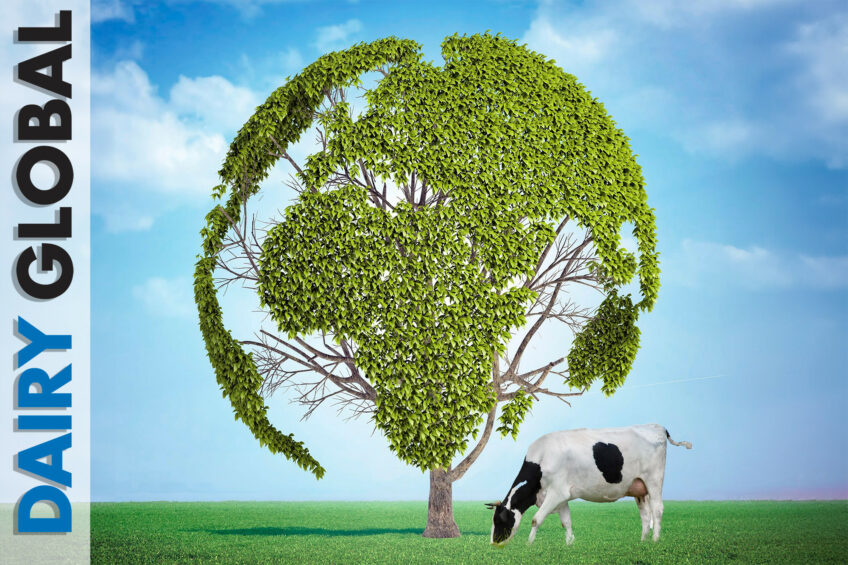
This 2nd edition of Dairy Global magazine for 2025 is available! What does it take to reduce emissions successfully, and how can magnesium help in tackling heat stress? What does creating a sustainable and profitable future entail? This and more in the new edition – happy reading!
Reducing emissions successfully
Dairy farmers accept and understand they have a key role to play in reducing their herd’s emissions. There are a number of measures that can be implemented – from smarter breeding and management to AI tools – that can help reduce greenhouse gas production from livestock. Here we dive into some of these measures. Page 6
The heat stress challenge: How can magnesium help?
Heat stress in livestock farming occurs when high temperatures are coupled with elevated humidity, leading to reduced feed intake, lower productivity, and health complications. The severity of heat stress is measured using the Temperature-Humidity Index (THI), with mild stress beginning at THI 72, severe stress at THI 83, and extreme stress above THI 84. Page 8
Creating a sustainable, profitable future for agriculture
Sustainability in the agri-food sector often sparks a debate as stakeholders strive to balance environmental goals with economic impacts. Understanding where the sustainability issues lie is crucial for all of us. Alltech conducted an insights survey in 2023 with 26 one-to-one interviews and a quantitative study with over 2,500 respondents including some of the key players in our industry. Page 12
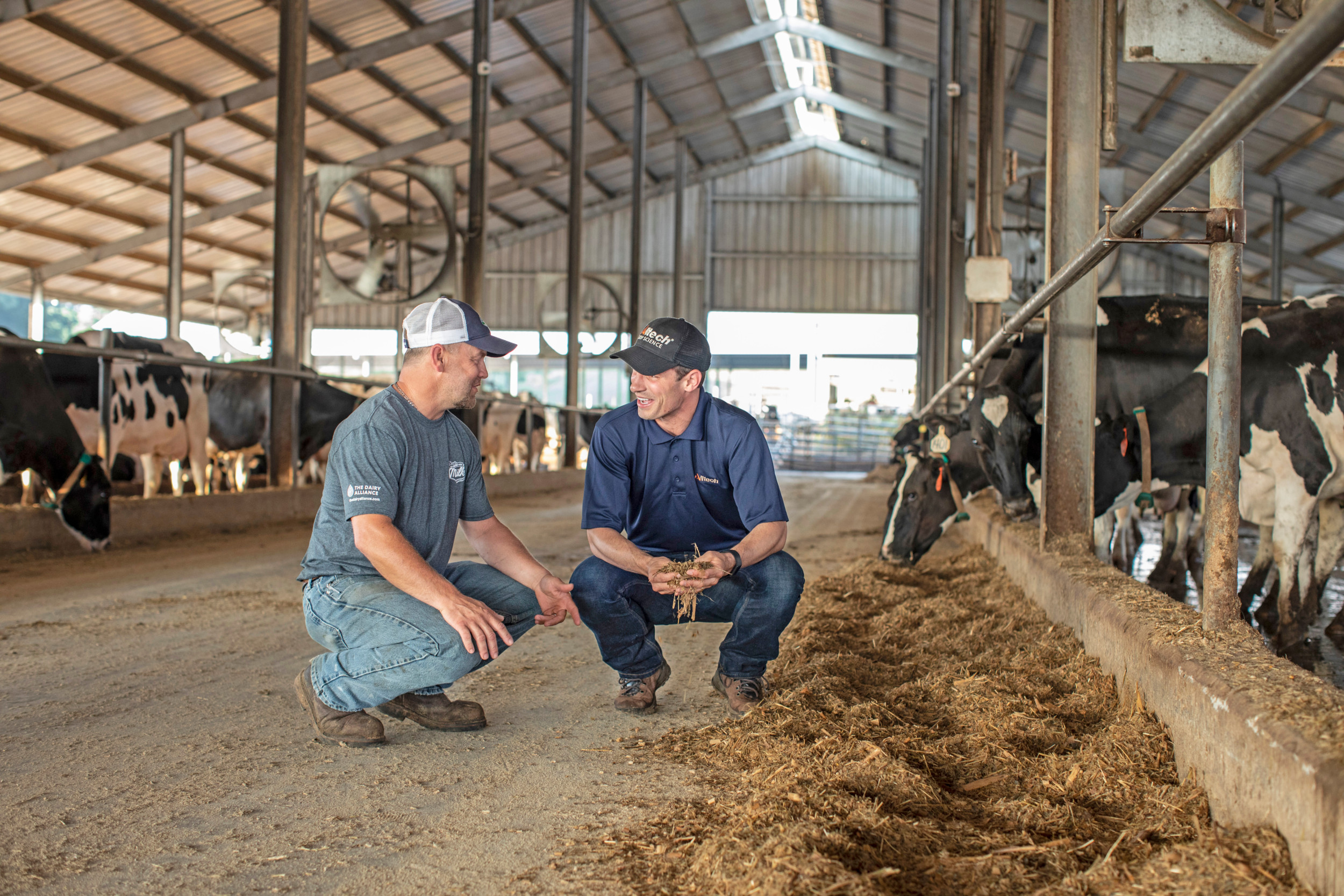
How grass species and harvesting impact milk and methane
As the dairy industry continues to reduce its contribution to greenhouse gas emissions, the focus on nutritional strategies remains highly relevant. As grass silages are common in the dairy cow’s diet, researchers from the Norwegian University of Life Sciences investigated how different grass species and harvesting frequency impact milk and methane production. Their findings, presented in this article, offer a simple yet practical tool to reduce methane production while maintaining milk yields. Page 14
From rumen to revenue: Optimising dairy cow nutrition
In today’s dairy industry where feed prices are volatile and margins are often slim, efficiency is not a luxury; it is a necessity. Farmers are under increasing pressure to produce more milk from fewer inputs, all while navigating labour shortages, tightening regulations, and rising expectations around animal welfare and environmental sustainability. Page 16
Impact of diet on rumen development in calves
Proper nutritional strategies during the postnatal and weaning period can drastically affect rumen and rumen microbiota development. Here we look at nutritional strategies and their role in rumen function and development in calves. Page 26
Improving fibre digestion during periods of heat stress
During periods of heat stress, cows often change their feeding behaviour due to discomfort and increased body temperature. This leads to reduced feed intake and consequently lower milk production. Heat stress can also cause changes in the rumen microbiome. Page 27
Feeding cows cottonseed helps to increase milk fat
A new study from Penn State shows that adding 15% whole cottonseed to dairy cow feed can help to boost the production of milk fat. Whole cotton seed for fibre, is highly unsaturated fatty acid and the protein that cows need to produce milk fat. Page 29
Precision nutrition with amino acid balancing: A profitable path to sustainable dairy farming
Dairy farming is under increasing pressure to align with global climate goals while maintaining profitability. As regulations tighten and environmental concerns rise, innovative feeding strategies offer hope. One such strategy – precision nutrition through amino acid balancing – is emerging as a promising solution. Page 30
Sustainable dairy farming in Italy: The Crespi Invernizzi approach
Massimo Crespi runs Crespi Invernizzi Farm in Sedriano, close to Milan. This region is known for raising high-quality dairy cows. Home to around 190 cows, Crespi Invernizzi farm is renowned for producing excellent milk. The farm is part of the San Angiolina cooperative, famous for Grana Padano cheese. Page 34
Magnesium: The cornerstone to animal health
Magnesium is an essential mineral in cattle nutrition, influencing numerous biochemical reactions. Ensuring adequate magnesium intake is vital for optimal growth, milk production, and overall animal well-being. Page 40
Feeding cows under various disease conditions
Several feeding management strategies can be used as a supportive treatment for various health problems. This article provides some insights into the most common diseases and metabolic disorders in cattle and feeding strategies that can be adopted to reduce the impact on animals and farm operations and profitability. Page 41
Join 13,000+ subscribers
Subscribe to our newsletter to stay updated about all the need-to-know content in the dairy sector, two times a week.



